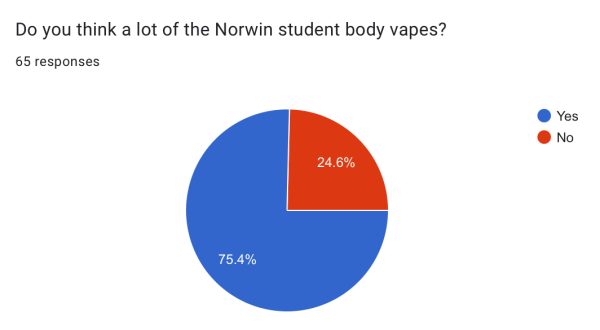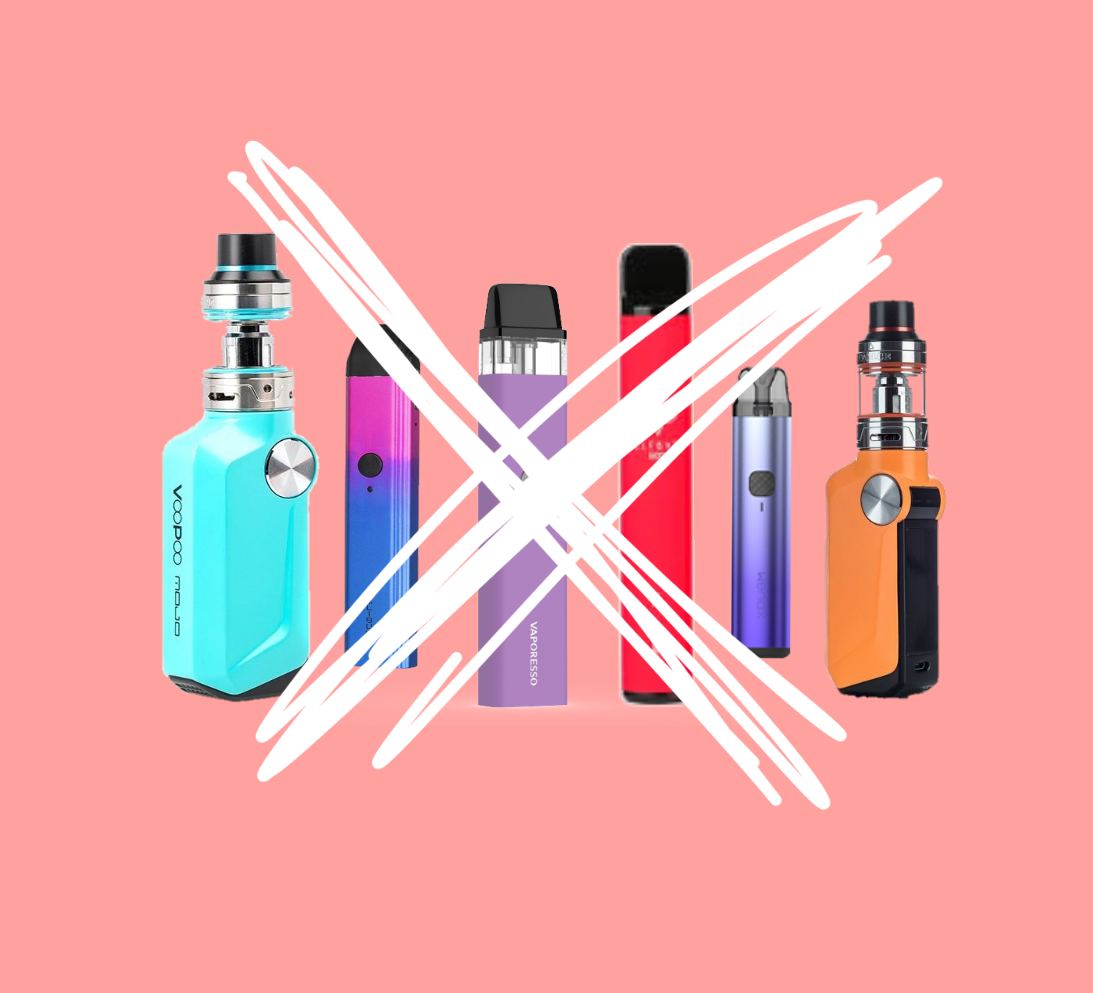Cigarettes, vapes and carts. These smoking products are commonly seen throughout today’s world, but unfortunately many of their users happen to be high schoolers. At Norwin High School, many students make poor choices and vaping is a prominent part of high school culture not only at Norwin, but in high schools across the U.S today.
According to a Cross River Therapy article, teenagers between 15 and 17 years of age have a 16 times greater chance of vaping than adults between ages 25 and 34. Therefore, if you’re a high school student, and even in some rare cases a middle school student, you have probably seen or heard of students getting caught vaping.
E-cigarettes entered the U.S marketplace around 2007, and since 2014, became the most commonly used tobacco product among the U.S according to the CDC, (Centers for Disease Control and Prevention).
A recent Norwin poll has shown that 66 percent of Norwin students know someone who vapes regularly, and that 75 percent of students here believe that the majority of the student body vapes.
“I don’t really care if my friends vape, but if you can’t go six hours at school without it, that’s when you know that you have a huge problem,” said a anonymous sophomore, in a journalism poll.
Growing up in Norwin, students were always taught the values of keeping a distance from drugs and smoking from a very young age. So it is unfortunate that so many high school students choose to make choices that can be detrimental to their health
“I would say aside from the obvious nicotine addiction,” said Norwin High School gym/health teacher, Mrs. Samantha Fairbanks. “It would be the harsh, harmful effects on the lungs and cardiovascular system. Some of the scarring on the lungs is irreversible.”
While people may only focus on the impact vaping has on your body, it is critical to realize that vaping has effect on many aspects to their life
 According to a Campus Safety article, researchers continue to study the impact of vaping on users of all ages, a new study revealed vaping in teens has been linked to lowered academic performance, decreased student engagement, and increased depression.
According to a Campus Safety article, researchers continue to study the impact of vaping on users of all ages, a new study revealed vaping in teens has been linked to lowered academic performance, decreased student engagement, and increased depression.
When you look at all the statistics and research done about this topic that shows the real truth about vaping, it raises the question: “Why do teenagers vape?”
“Peer pressure and ‘fitting in’ and in some cases the situation at home with either their role models or family members that do so, unfortunately that ‘fitting in’ becomes a nicotine addiction,” said Fairbanks.
While there are many reasons that teenagers can start smoking, peer pressure and “fitting in” are the most common amongst those reasons.
Fortunately Norwin has a good grasp on handling these issues.
“With the discreteness of the vapes these days, I feel there is a pretty good grasp on it besides the inability to camp out in the bathrooms,” said Fairbanks.
It is important for Norwin students never forget the values that students grew up with; most high school students vape as a way to “fit in” amongst their peers, few of these students take into account of the negative impacts on their body. Studies have shown that vaping takes a long term physical and emotional side effects. With all of that in mind, vaping would prove to be an unhealthy way to fit in.








